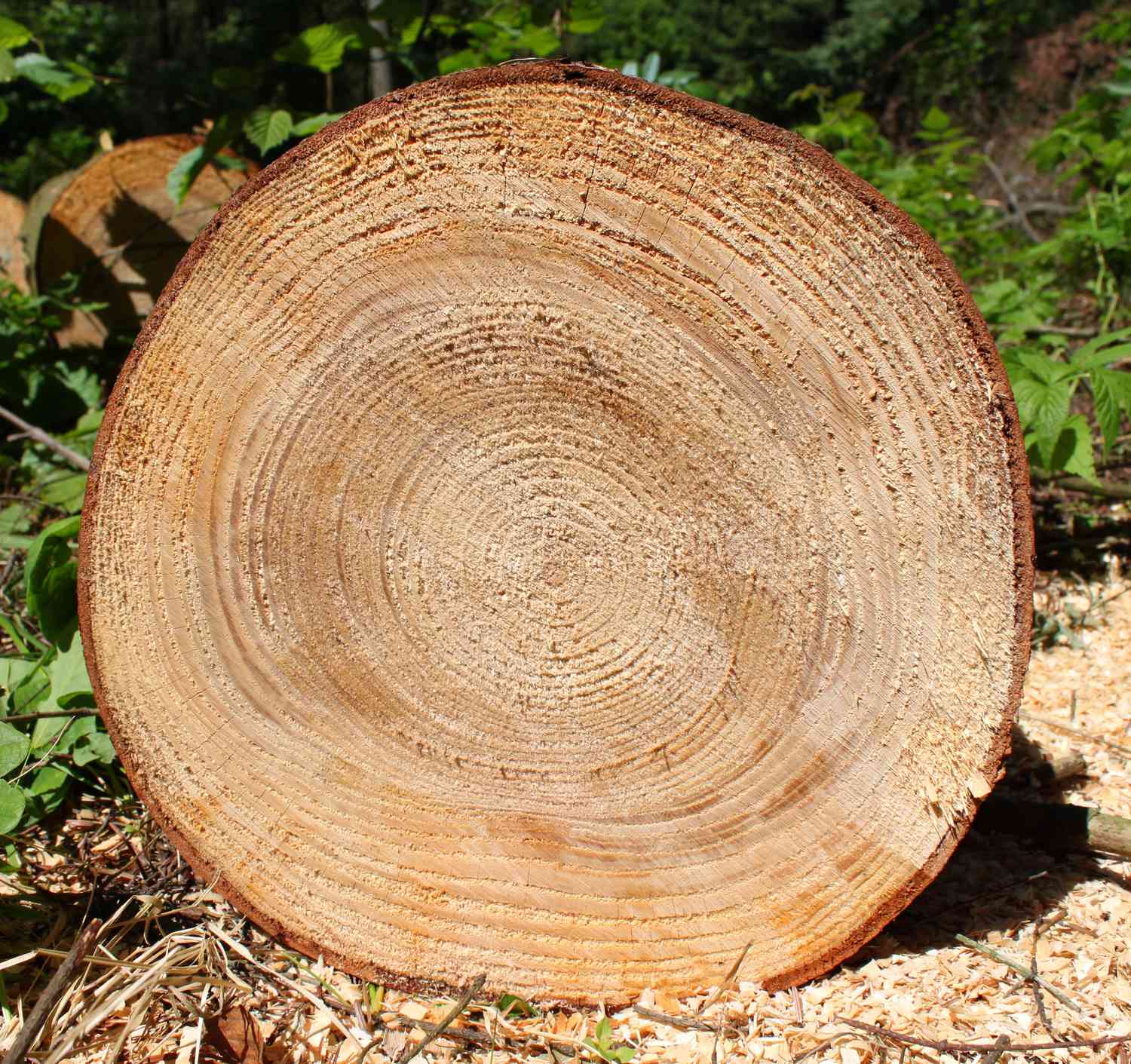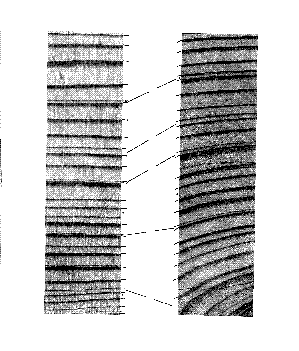The Science of Tree Rings
Dendrochronology is the scientific method of dating tree rings (also called growth rings) to the exact year they were formed. As well as dating them, this can give data for dendroclimatology, the study of climate and atmospheric conditions during different periods in history from wood.
How It Works
Trees in temperate zones grow one ring each year. These rings are typically wider in warm, wet years and thinner in cold, dry years. This variation in ring width, influenced by climate, forms a distinct pattern over time. By matching these patterns across different trees and wood samples, scientists can build continuous chronologies extending back hundreds or even thousands of years.

Methodology: How Tree-Ring Dating Works
Dendrochronological dating involves careful sample collection, preparation, and analysis:
Samples are typically taken using an increment borer, which extracts a small core from the tree without harming it. Samples can also be taken from dead trees, timber from buildings, or archaeological wood.
Cores or sections are mounted and sanded to make the rings clearly visible. Ring widths are then precisely measured, often using specialized software and digital imaging.
Data Analysis
Measured ring-width sequences are statistically compared to established master chronologies for the region and species to find a match and assign exact calendar dates to each ring.
Cross-Dating and Chronology Building
The cornerstone of dendrochronology is cross-dating. This is the process of matching ring-width patterns among several tree-ring series, allowing the identification of the exact year in which each tree ring was formed.
Building Master Chronologies
By cross-dating samples from living trees with progressively older wood (from historic buildings, archaeological sites, bogs, etc.), scientists create long, continuous "master chronologies" or "reference chronologies" for specific regions and species.
- Samples from living trees provide the most recent part of the chronology.
- Older timbers are matched against the living tree record and extend it further back.
- This process continues, overlapping samples to ensure accuracy and bridge gaps.
Example: Bristlecone Pine Chronology
The Great Basin Bristlecone Pine (Pinus longaeva) chronology from the White Mountains of California is one of the longest continuous tree-ring records, extending back over 9,000 years. This chronology has been fundamental for calibrating radiocarbon dates.

Applications of Dendrochronology
Dendrochronology provides precise dating and environmental information valuable across many fields:
1. Archaeology
Dating wooden artifacts, structures, and settlement phases with annual precision. Understanding past building techniques and timber use.
2. Climatology (Dendroclimatology)
Reconstructing past temperature, precipitation, drought frequency, and other climatic variables far beyond the instrumental record.
3. Geomorphology & Hydrology
Dating past geological events like landslides, volcanic eruptions (affecting growth), and floods. Reconstructing past river flows.
4. Ecology & Forestry
Studying forest dynamics, fire history, insect outbreaks, and the effects of pollution or climate change on tree growth.
5. Radiocarbon Calibration
Providing the primary dataset (tree rings of known calendar age) for calibrating radiocarbon dates, significantly increasing the accuracy of C-14 dating.
Role in Radiocarbon Calibration
One of the most critical applications of dendrochronology is its role in calibrating the radiocarbon timescale. Because tree rings can be assigned exact calendar years, they provide a benchmark against which radiocarbon dates can be checked and adjusted.
The Calibration Curve
By measuring the carbon-14 content of wood from specific, dendrochronologically dated tree rings, scientists can determine the atmospheric carbon-14 level for that exact year. Compiling thousands of such measurements from long tree-ring chronologies (like the Bristlecone Pine and European Oak records) allows the construction of detailed radiocarbon calibration curves (e.g., IntCal20).
This calibration accounts for past fluctuations in atmospheric C-14 production, converting raw radiocarbon "years" into much more accurate calendar dates.
Interdisciplinary Confirmation
The excellent agreement between dendrochronology and calibrated radiocarbon dates provides strong mutual validation for both dating methods. Discrepancies are often traceable to specific, understandable phenomena (like regional C-14 variations or sample issues), further refining our understanding.
Limitations and Considerations
While highly precise, dendrochronology has its limitations:
Geographic & Species Dependence
The method works best in regions with distinct growing seasons. Suitable tree species are required, and master chronologies are geographically specific. Tropical regions often lack the clear annual rings needed.
Ring Problems
Issues like missing rings (during severe stress), false rings (intra-annual growth bands), or locally absent rings can complicate analysis and require expert interpretation and cross-dating with multiple samples.
Sample Availability & Context
Requires well-preserved wood with sufficient rings. For dating archaeological sites or objects, the relationship between the dated timber and the target event must be secure (e.g., was the wood reused?). The outer rings (bark or near-bark) are needed to determine the felling date.
Age Range
Limited by the lifespan of trees and the preservation of ancient wood. While some chronologies exceed 10,000 years, this is exceptional. Dating beyond the established chronologies for a region is not possible.
Conclusion: The Precision of Tree-Ring Dating
Dendrochronology offers unparalleled annual resolution for dating past events and reconstructing environmental conditions within its applicable range. Its reliability is established through:
- The Principle of Cross-Dating: Rigorous pattern matching ensures accurate placement of each ring in time.
- Independent Verification: Master chronologies are built from numerous overlapping samples, providing internal consistency and checks.
- Calibration Role: Its use in calibrating radiocarbon dating highlights its accuracy and foundational importance in chronology building.
- Diverse Applications: Successful application across multiple scientific disciplines demonstrates its robustness.
When applicable, dendrochronology provides some of the most precise dates obtainable for archaeological, historical, and paleoenvironmental research, offering a year-by-year window into the past.